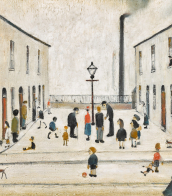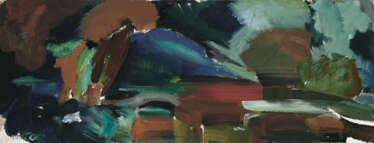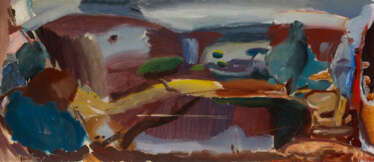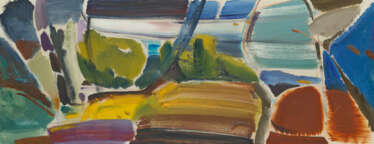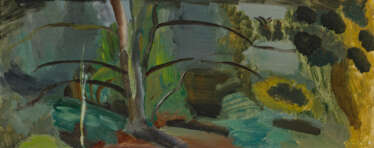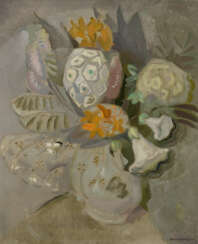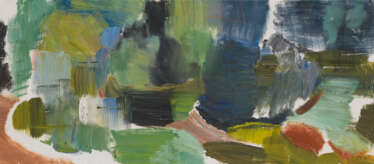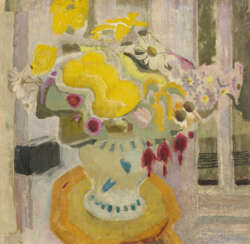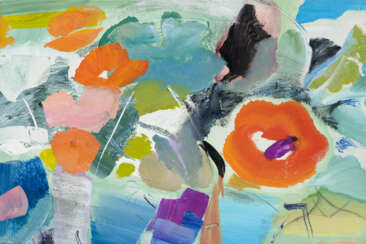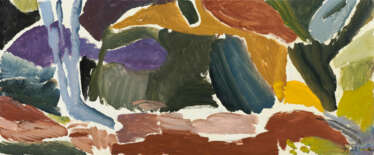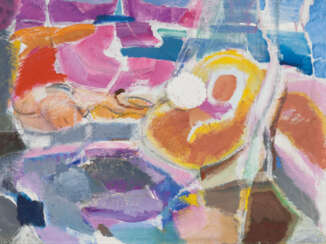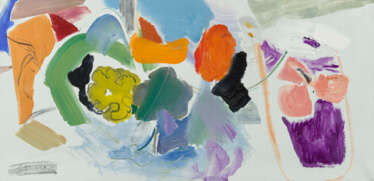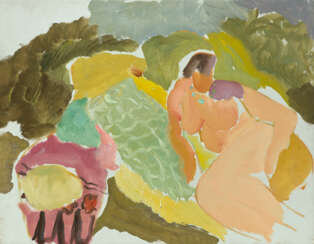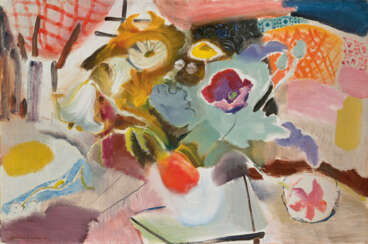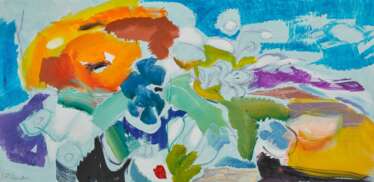айвон хитченс (1893 - 1979)
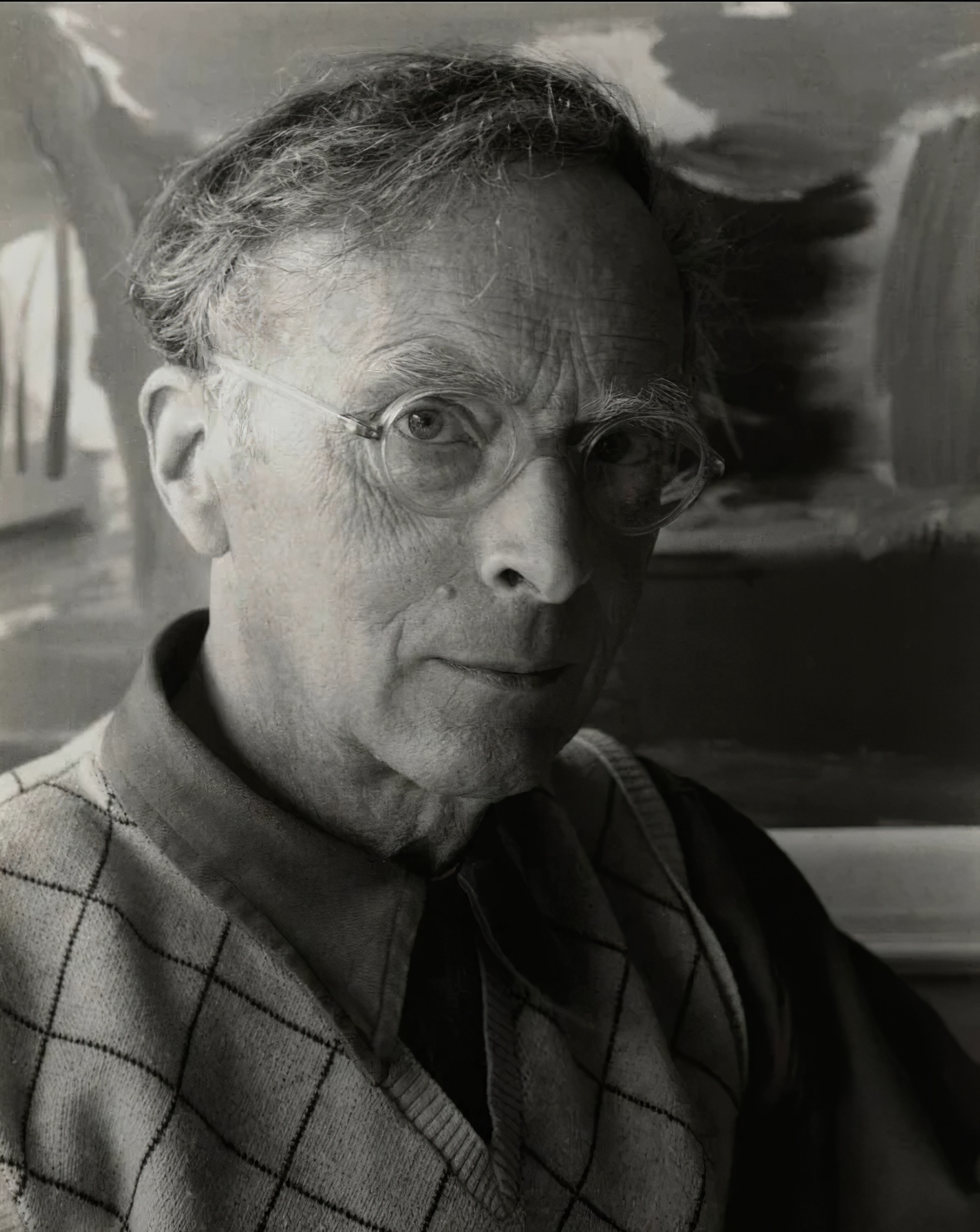
Ivon Hitchens was an English painter who started exhibiting during the 1920s. He became part of the 'London Group' of artists and exhibited with them during the 1930s. His house was bombed in 1940 during World War II. Hitchens and his family abandoned London for the Sussex countryside, where he acquired a small area of woodland on Lavington Common (near Petworth), and lived there in a caravan, which he gradually augmented with a series of buildings. It was here that the artist further developed his fascination with the woodland subject matter, and this pre-occupation continued until the artist’s death in 1979.
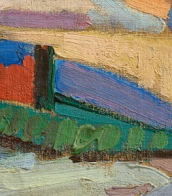

Ivon Hitchens was an English painter who started exhibiting during the 1920s. He became part of the 'London Group' of artists and exhibited with them during the 1930s. His house was bombed in 1940 during World War II. Hitchens and his family abandoned London for the Sussex countryside, where he acquired a small area of woodland on Lavington Common (near Petworth), and lived there in a caravan, which he gradually augmented with a series of buildings. It was here that the artist further developed his fascination with the woodland subject matter, and this pre-occupation continued until the artist’s death in 1979.
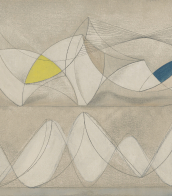

Ivon Hitchens was an English painter who started exhibiting during the 1920s. He became part of the 'London Group' of artists and exhibited with them during the 1930s. His house was bombed in 1940 during World War II. Hitchens and his family abandoned London for the Sussex countryside, where he acquired a small area of woodland on Lavington Common (near Petworth), and lived there in a caravan, which he gradually augmented with a series of buildings. It was here that the artist further developed his fascination with the woodland subject matter, and this pre-occupation continued until the artist’s death in 1979.


Ivon Hitchens was an English painter who started exhibiting during the 1920s. He became part of the 'London Group' of artists and exhibited with them during the 1930s. His house was bombed in 1940 during World War II. Hitchens and his family abandoned London for the Sussex countryside, where he acquired a small area of woodland on Lavington Common (near Petworth), and lived there in a caravan, which he gradually augmented with a series of buildings. It was here that the artist further developed his fascination with the woodland subject matter, and this pre-occupation continued until the artist’s death in 1979.


Ivon Hitchens was an English painter who started exhibiting during the 1920s. He became part of the 'London Group' of artists and exhibited with them during the 1930s. His house was bombed in 1940 during World War II. Hitchens and his family abandoned London for the Sussex countryside, where he acquired a small area of woodland on Lavington Common (near Petworth), and lived there in a caravan, which he gradually augmented with a series of buildings. It was here that the artist further developed his fascination with the woodland subject matter, and this pre-occupation continued until the artist’s death in 1979.
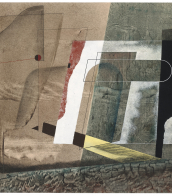

Ivon Hitchens was an English painter who started exhibiting during the 1920s. He became part of the 'London Group' of artists and exhibited with them during the 1930s. His house was bombed in 1940 during World War II. Hitchens and his family abandoned London for the Sussex countryside, where he acquired a small area of woodland on Lavington Common (near Petworth), and lived there in a caravan, which he gradually augmented with a series of buildings. It was here that the artist further developed his fascination with the woodland subject matter, and this pre-occupation continued until the artist’s death in 1979.


Ivon Hitchens was an English painter who started exhibiting during the 1920s. He became part of the 'London Group' of artists and exhibited with them during the 1930s. His house was bombed in 1940 during World War II. Hitchens and his family abandoned London for the Sussex countryside, where he acquired a small area of woodland on Lavington Common (near Petworth), and lived there in a caravan, which he gradually augmented with a series of buildings. It was here that the artist further developed his fascination with the woodland subject matter, and this pre-occupation continued until the artist’s death in 1979.


Ivon Hitchens was an English painter who started exhibiting during the 1920s. He became part of the 'London Group' of artists and exhibited with them during the 1930s. His house was bombed in 1940 during World War II. Hitchens and his family abandoned London for the Sussex countryside, where he acquired a small area of woodland on Lavington Common (near Petworth), and lived there in a caravan, which he gradually augmented with a series of buildings. It was here that the artist further developed his fascination with the woodland subject matter, and this pre-occupation continued until the artist’s death in 1979.


Ivon Hitchens was an English painter who started exhibiting during the 1920s. He became part of the 'London Group' of artists and exhibited with them during the 1930s. His house was bombed in 1940 during World War II. Hitchens and his family abandoned London for the Sussex countryside, where he acquired a small area of woodland on Lavington Common (near Petworth), and lived there in a caravan, which he gradually augmented with a series of buildings. It was here that the artist further developed his fascination with the woodland subject matter, and this pre-occupation continued until the artist’s death in 1979.
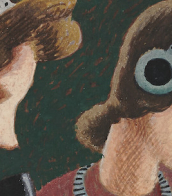

Ivon Hitchens was an English painter who started exhibiting during the 1920s. He became part of the 'London Group' of artists and exhibited with them during the 1930s. His house was bombed in 1940 during World War II. Hitchens and his family abandoned London for the Sussex countryside, where he acquired a small area of woodland on Lavington Common (near Petworth), and lived there in a caravan, which he gradually augmented with a series of buildings. It was here that the artist further developed his fascination with the woodland subject matter, and this pre-occupation continued until the artist’s death in 1979.


Ivon Hitchens was an English painter who started exhibiting during the 1920s. He became part of the 'London Group' of artists and exhibited with them during the 1930s. His house was bombed in 1940 during World War II. Hitchens and his family abandoned London for the Sussex countryside, where he acquired a small area of woodland on Lavington Common (near Petworth), and lived there in a caravan, which he gradually augmented with a series of buildings. It was here that the artist further developed his fascination with the woodland subject matter, and this pre-occupation continued until the artist’s death in 1979.


Ivon Hitchens was an English painter who started exhibiting during the 1920s. He became part of the 'London Group' of artists and exhibited with them during the 1930s. His house was bombed in 1940 during World War II. Hitchens and his family abandoned London for the Sussex countryside, where he acquired a small area of woodland on Lavington Common (near Petworth), and lived there in a caravan, which he gradually augmented with a series of buildings. It was here that the artist further developed his fascination with the woodland subject matter, and this pre-occupation continued until the artist’s death in 1979.


Ivon Hitchens was an English painter who started exhibiting during the 1920s. He became part of the 'London Group' of artists and exhibited with them during the 1930s. His house was bombed in 1940 during World War II. Hitchens and his family abandoned London for the Sussex countryside, where he acquired a small area of woodland on Lavington Common (near Petworth), and lived there in a caravan, which he gradually augmented with a series of buildings. It was here that the artist further developed his fascination with the woodland subject matter, and this pre-occupation continued until the artist’s death in 1979.
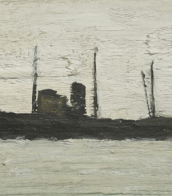

Ivon Hitchens was an English painter who started exhibiting during the 1920s. He became part of the 'London Group' of artists and exhibited with them during the 1930s. His house was bombed in 1940 during World War II. Hitchens and his family abandoned London for the Sussex countryside, where he acquired a small area of woodland on Lavington Common (near Petworth), and lived there in a caravan, which he gradually augmented with a series of buildings. It was here that the artist further developed his fascination with the woodland subject matter, and this pre-occupation continued until the artist’s death in 1979.


Ivon Hitchens was an English painter who started exhibiting during the 1920s. He became part of the 'London Group' of artists and exhibited with them during the 1930s. His house was bombed in 1940 during World War II. Hitchens and his family abandoned London for the Sussex countryside, where he acquired a small area of woodland on Lavington Common (near Petworth), and lived there in a caravan, which he gradually augmented with a series of buildings. It was here that the artist further developed his fascination with the woodland subject matter, and this pre-occupation continued until the artist’s death in 1979.
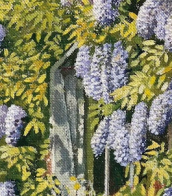

Ivon Hitchens was an English painter who started exhibiting during the 1920s. He became part of the 'London Group' of artists and exhibited with them during the 1930s. His house was bombed in 1940 during World War II. Hitchens and his family abandoned London for the Sussex countryside, where he acquired a small area of woodland on Lavington Common (near Petworth), and lived there in a caravan, which he gradually augmented with a series of buildings. It was here that the artist further developed his fascination with the woodland subject matter, and this pre-occupation continued until the artist’s death in 1979.
